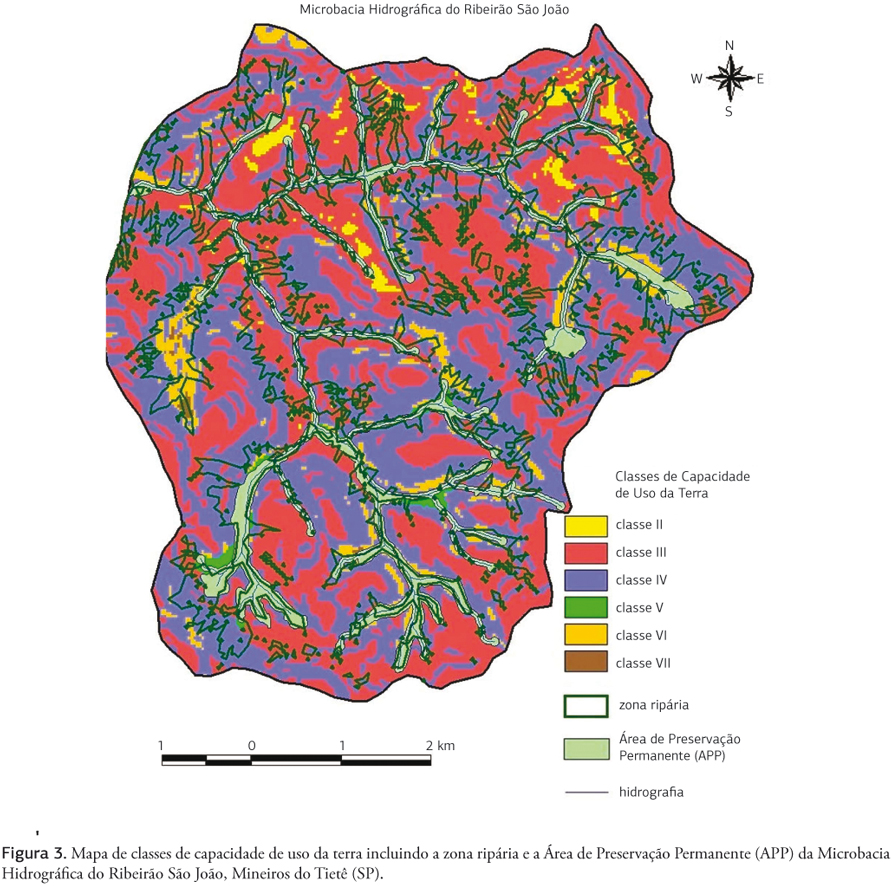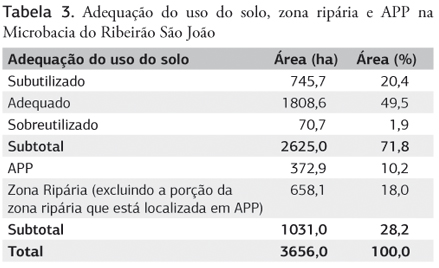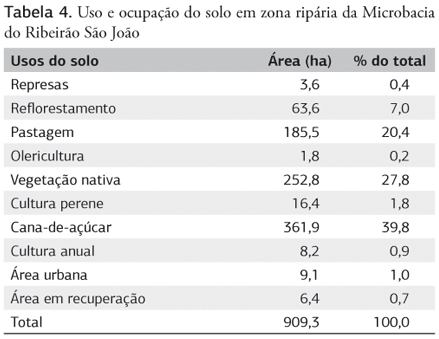Riparian zones are water-saturated areas, permanent or temporary, which are important for the protection of the water resources in small watersheds. This study compared the adequacy of the land use in two scenarios of agricultural planning of a small watershed: the conventional scenario, representing the method usually employed, which considers only the classes of land use capacity, and the hydrological scenario, which also includes the delimitation and evaluation of the conditions of the riparian zones. A case study was carried out in the São João Creek watershed (3656 ha), located in Mineiros do Tietê (São Paulo/Brazil). Land Use Capacity Classes Map and Adequacy of Land Use Map were elaborated, using the Geographical Information System (SIG), for construction of the conventional and alternative scenarios. The conventional scenario indicated that 59.0% of the agricultural area, excluding the Permanent Preservation Area (PPA), is being properly used, 28.2% is underused and 2.6% is overused. The proposed hydrological scenario, with inclusion of the riparian zone, which represents 24,9% of the watershed, shows that many areas, which in the conventional scenario present little restriction to intensive cultivation, as classes II and III, are actually riparian zones. Within the limits of the riparian zones, there are 38.9% of the capacity class III and 49.5% of the class IV. Therefore, if the riparian zones are not considered in land use planning, the risk of degradation of these hydrological sensitive areas may increase, which can affect the health and resilience of the watershed.
land use capacity classes; adequacy of land use; sustainable agriculture; sceneries; integrated management plans; wetlands

 The importance of the riparian areas for hydrologic sustainability of the land use in watersheds
The importance of the riparian areas for hydrologic sustainability of the land use in watersheds






